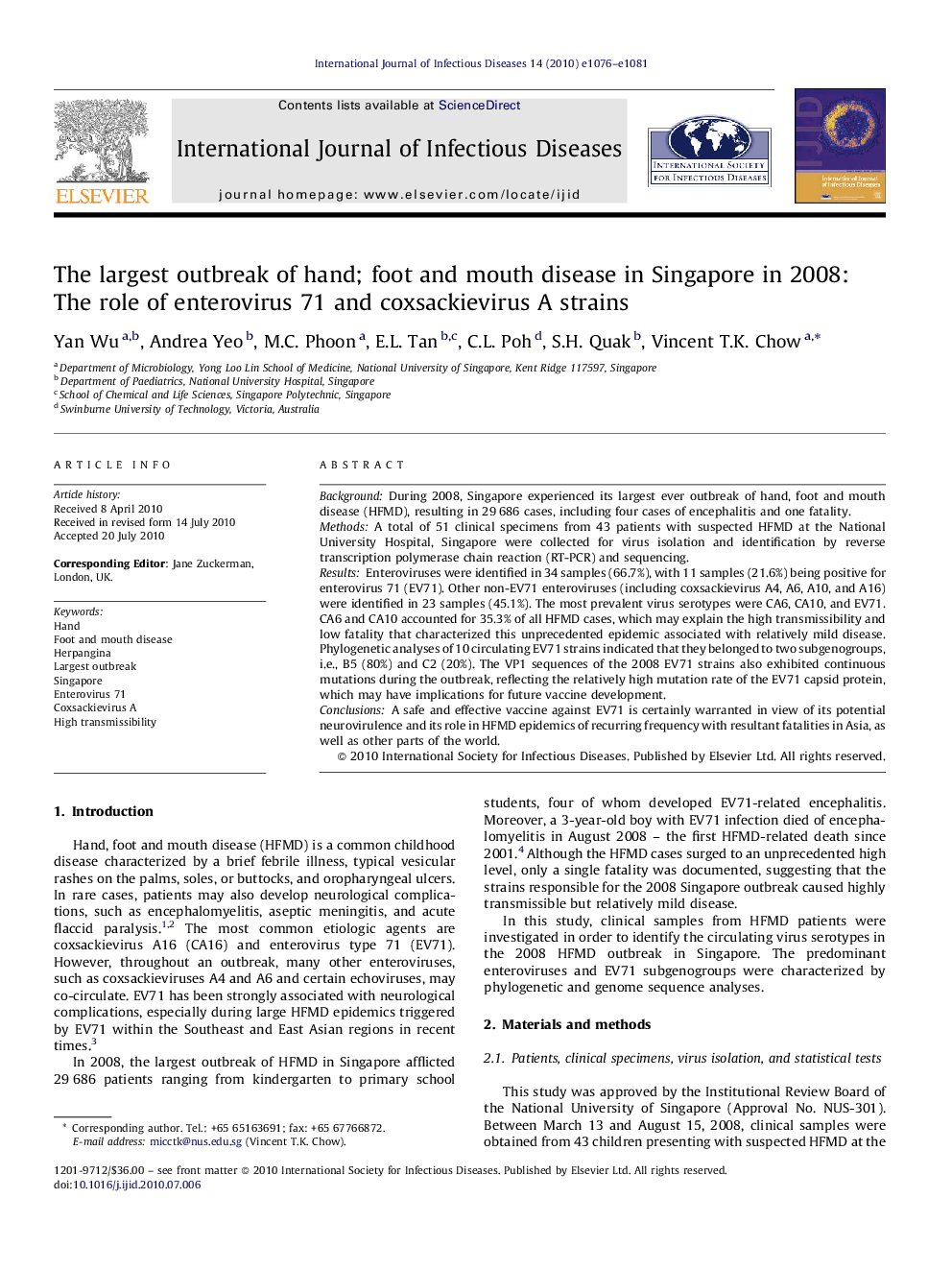| Article ID | Journal | Published Year | Pages | File Type |
|---|---|---|---|---|
| 3364193 | International Journal of Infectious Diseases | 2010 | 6 Pages |
BackgroundDuring 2008, Singapore experienced its largest ever outbreak of hand, foot and mouth disease (HFMD), resulting in 29 686 cases, including four cases of encephalitis and one fatality.MethodsA total of 51 clinical specimens from 43 patients with suspected HFMD at the National University Hospital, Singapore were collected for virus isolation and identification by reverse transcription polymerase chain reaction (RT-PCR) and sequencing.ResultsEnteroviruses were identified in 34 samples (66.7%), with 11 samples (21.6%) being positive for enterovirus 71 (EV71). Other non-EV71 enteroviruses (including coxsackievirus A4, A6, A10, and A16) were identified in 23 samples (45.1%). The most prevalent virus serotypes were CA6, CA10, and EV71. CA6 and CA10 accounted for 35.3% of all HFMD cases, which may explain the high transmissibility and low fatality that characterized this unprecedented epidemic associated with relatively mild disease. Phylogenetic analyses of 10 circulating EV71 strains indicated that they belonged to two subgenogroups, i.e., B5 (80%) and C2 (20%). The VP1 sequences of the 2008 EV71 strains also exhibited continuous mutations during the outbreak, reflecting the relatively high mutation rate of the EV71 capsid protein, which may have implications for future vaccine development.ConclusionsA safe and effective vaccine against EV71 is certainly warranted in view of its potential neurovirulence and its role in HFMD epidemics of recurring frequency with resultant fatalities in Asia, as well as other parts of the world.
